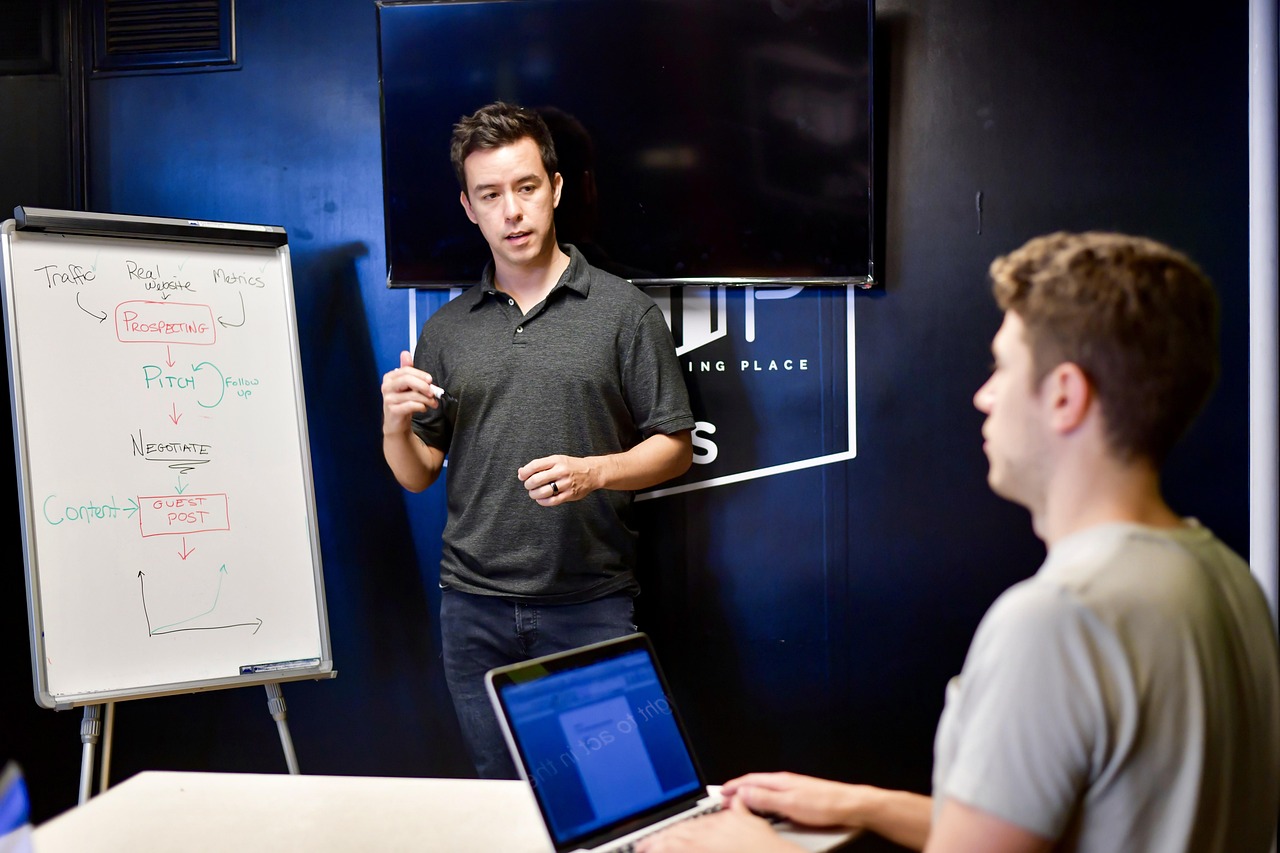
The role of leadership is to guide, inspire and mobilise people to make an active contribution to a sustainable development. robust ecosystem. The leader defines the vision, establishes a culture of trust and facilitates synergies between stakeholders. Without clear, committed leadership, interactions remain fragmented and the ecosystem lacks coherence. At each phase, the leader acts to consolidate the whole on an ongoing basis.
Defining a shared vision
The starting point for a robust ecosystem is a clear, shared vision. The leader articulates a common goal that gives meaning to every contribution. You need to formulate this vision in a simple and inspiring way.
For example:
"Create a network of players working together to innovate locally while meeting the demands of the global market."
This vision guides strategic decisions and aligns efforts. According to O.C. Tanner, the most successful organisations integrate leadership development at all levels, making every employee a stakeholder in the vision. So, to establish a solid ecosystem, start by sharing a common purpose and common goals.
Establishing a collaborative culture
The leader creates a climate where collaboration is valued. You encourage forums for exchange and collective rituals: interdepartmental workshops, multi-stakeholder meetings, co-creation platforms. This openness encourages the emergence of ideas and strengthens links.
For example:
Regularly inviting partners to brainstorming sessions shows that their input counts.
Studies show that leadership that involves stakeholders increases trust and retention by 20 %. You ensure that contributions are publicly recognised to reinforce commitment.
Facilitating innovation and experimentation
In a robust ecosystemInnovation is continuous. The leader plays the role of facilitator, encouraging experimentation and accepting constructive failure. You can set up internal "labs" or pilot projects with external partners. By offering resources (time, budget, expertise) to test new ideas, you demonstrate the importance of learning.
According to ANDESuccessful entrepreneurial ecosystems are based on frequent interaction between a variety of players and leadership that supports innovation. So your role is to orchestrate these initiatives so that the solid ecosystem becomes a constant breeding ground for development.

Mobilising stakeholders
A robust ecosystem involves several stakeholders: employees, customers, suppliers, institutions and local communities. The leader identifies everyone's expectations and creates opportunities to co-create value. You establish strategic partnerships aligned with the vision.
For example:
Co-develop a service with a supplier to meet a specific customer need.
The data shows that companies that integrate their partners right from the design stage launch 30 % more innovative projects. This is how a solid ecosystem is consolidated.
Developing trust and transparency
Trust is the glue that holds a robust ecosystem. The leader establishes transparent practices: sharing of relevant information, regular communication of progress and challenges. You can organise open monitoring points, publish progress reports or run discussion forums.
This transparency reassures and involves the stakeholders, who feel part of the overall project. A climate of trust facilitates rapid decision-making and effective cooperation. Without this foundation, efforts remain compartmentalised and the ecosystem weakens.
Strengthening skills and shared leadership
The role of leadership is not limited to the executive. For a robust ecosystemEach player must be encouraged to exercise leadership in his or her field. You develop training and mentoring programmes to disseminate skills.
For example:
Workshops on collaborative project management and innovation culture.
McKinsey reports that organisations that extend leadership development to all employees significantly improve their overall performance. By giving everyone a sense of responsibility, you create a network of leaders capable of carrying the solid ecosystem forward on a daily basis.
Structuring appropriate governance
A robust ecosystem requires clear governance. The leader defines shared decision-making and steering mechanisms: joint committees, collaboration charters, common indicators. You put in place simple rules to facilitate interaction (for example, a streamlined approval process for co-created projects).
This approach guarantees agility and avoids bureaucracy. Participative governance strengthens buy-in and speed of execution, two pillars of a solid ecosystem that is constantly evolving.
Measuring the impact and adjusting
To perpetuate a robust ecosystemThe leader installs appropriate performance indicators: number of collaborative initiatives, rate of adoption of co-created solutions, stakeholder satisfaction, financial value generated.
You analyse this data regularly and organise reviews with the stakeholders to adjust strategies. This feedback loop feeds the resilience and relevance of the ecosystem. According to StatCanBy monitoring contextual indicators, you improve your ability to adapt to changes in the market. You need to communicate these results to motivate and guide the next steps.
Maintaining adaptability in the face of change
A robust ecosystem remains flexible in the face of external changes (technological, regulatory, economic). The leader anticipates trends and mobilises the ecosystem to respond collectively. You organise shared monitoring and forward-looking scenarios involving all the players.
This collective preparation ensures that the ecosystem is not weakened by external shocks. Proactive, reactive leadership enables cohesion to be maintained and directions to be adjusted quickly, consolidating the solid ecosystem over the long term.
Encouraging sustainability and social responsibility
For a robust ecosystem to have a lasting positive impact, the leader integrates social and environmental responsibility into collaborative projects. You can launch co-constructed initiatives aimed at reducing the ecological footprint or supporting the local community.
This orientation strengthens the commitment of stakeholders and gives meaning to our actions. Consumers and partners increasingly value these concerns, which contributes to the reputation and viability of the ecosystem. By placing sustainability at the heart of the strategy, leadership enhances the value of a solid ecosystem aligned with societal expectations.
Conclusion
The role of leadership is crucial in building and maintaining a robust ecosystem. By defining a shared vision, establishing a collaborative culture, facilitating innovation and mobilising and empowering the players, the leader creates the conditions for sustainable cooperation.
Transparency, appropriate governance, impact measurement and adaptability reinforce this dynamic. Finally, integrating sustainability ensures that the ecosystem lasts. Repeat and adjust these good practices to see your organisation and its partners evolve together towards shared success, consolidating your commitment at every stage. robust ecosystem.









